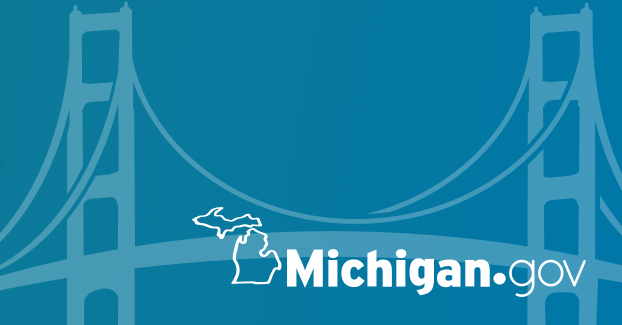
Bipartisan budget delivers on comprehensive economic development strategy centered on projects, people, and places, puts Michigan in strong economic position to win future
LANSING, Mich. — Wednesday, Governor Gretchen Whitmer highlighted investments in the recently passed bipartisan budget that deliver on “Make it in Michigan,” a comprehensive economic development strategy unveiled at the Mackinac Policy Conference.
“We need to win more projects, invest in people, and revitalize places so anyone can ‘Make it in Michigan,’” said Governor Whitmer. “The recent, bipartisan budget delivers on several key components of the Make it in Michigan strategy. In the months ahead, let’s keep our foot on the accelerator and make strategic investments to build a brighter future for Michigan. We have the momentum right now, with low unemployment and 82,000 jobs added year over year. Let’s bring manufacturing and supply chains home, improve student outcomes from pre-K through postsecondary, and build housing and community revitalization projects.”
MAKE IT IN MICHIGAN
A comprehensive strategy to help anyone ‘make it’ in Michigan. The goals:
- Make Michigan a top state for talent with low unemployment, higher labor force participation, more training and upskilling, and stronger talent attraction.
- Make Michigan more competitive in key sectors like research & development, advanced manufacturing, and clean tech—electric vehicles, batteries, semiconductor chips to ensure long-term economic strength.
- Make Michigan an arsenal of innovation where entrepreneurs and young companies have opportunities and resources to grow and expand
- Make Michigan a state full of attractive, vibrant communities where people want to live, work, and grow with investments to build more housing, expand access and lower the cost of child care, connect homes and businesses to high-speed internet, redevelop vacant or blighted properties, and bring new life to main streets and downtowns.
“We took an intentional approach of prioritizing people in our budget,” said Senator Sarah Anthony (D-Lansing). “People are the foundation of communities, and for decades communities that are key to Michigan’s economic revitalization have been overlooked and underinvested in. If we want Michigan to continue to attract top talent and expand our role as a hub for research and entrepreneurs, we need to invest in things that make people want to live here. Our bipartisan budget does just that by reinvesting in housing, education, workforce development, placemaking and small businesses to supercharge our growth and ensure that anyone can ‘Make It in Michigan.’”
The three pillars of Make it in Michigan are:
- Projects: compete for and win projects bringing manufacturing and supply chains home.
- People: invest in people so they can pursue their potential from pre-K through postsecondary and have their personal freedoms protected.
- Places: revitalize places to make them more attractive to live, work, and invest.
The recently passed, bipartisan budget and several pieces of legislation signed earlier this year deliver on all three. Here’s a comprehensive progress update.
PROJECTS
Make it Michigan Fund
Over the last 18 months, Michigan has won $16 billion of projects and 16,000 jobs thanks to powerful, bipartisan economic development tools established in December 2021.
The budget makes a $500 million annual deposit in the Make it in Michigan Fund to continue winning projects, creating jobs, and bringing supply chains home.
Made in Michigan Competitiveness Fund
The budget set aside $350 million into the Make it in Michigan Competitiveness Fund, which will be used to secure federal resources from the Bipartisan Infrastructure Law, the CHIPS and Science Act, and the Inflation Reduction Act. These resources will be used to fix or build a variety of infrastructure, secure high-tech, advanced manufacturing of semiconductors and batteries, and expand clean energy production while lowering costs for families.
Expanding High-Speed Internet
Michigan is set to receive over $1.5 billion (4th highest in the nation) through the federal Broadband Equity, Access, and Deployment (BEAD) Program to expand high-speed internet access to over 200,000 Michiganders in unserved and underserved areas across the state.
PEOPLE
Pre-K
The Governor proposed taking steps towards Pre-K for All by the end of her second term in her 2023 State of the State address. The budget makes investments to get it done, expanding free preschool to up to 5,600 more kids this year and more next year, saving families $10,000 a year and getting their kids a great start.
“For the first time in decades, we have a budget that properly invests in our students, teachers, and schools,” said Senator Darrin Camilleri (D- Brownstown Township). Between the largest per-pupil funding increase in Michigan's history and paving the way toward Pre-K for all with a significant GSRP expansion, this budget makes huge strides toward our goal of making sure that every child in Michigan gets a world-class public education."
Record Student Funding
Since taking office, the Governor has signed four record education budgets. The latest budget raises per-pupil to an all-time high, up 22% since the Governor took office. That’s $9,608 for every child, in every school, since the Governor also signed a bipartisan budget two years ago closing the school funding gap in Michigan.
Expand Reconnect
Governor Whitmer signed bipartisan legislation in February 2021 to launch Michigan Reconnect, which offers any Michigander 25 and older a tuition-free associates degree or skill certificate. By August 2022, the program had received 100,000 applications. In her 2023 State of the State address, the Governor proposed lowering the age of eligibility for Reconnect from 25 to 21. The budget got it done, expanding the program to 350,000 more Michiganders.
Grow Michigan’s Population
At the 2023 Mackinac Policy Conference, Governor Whitmer unveiled the bipartisan Growing Michigan Together Council, which will bring together diverse perspectives to focus on strategically growing the state’s population and economy while protecting its natural resources. The budget funds the council so they can get started on their initial report to the governor later this year.
PLACES
Building More Housing
Earlier this year, Governor Whitmer signed bipartisan legislation investing $150 million into the Housing and Community Development Fund (HCDF), which will help Michigan build or refurbish 2,000 housing units, house 6,000 Michiganders, and support 1,600 good-paying construction jobs. The bill also funded the Missing Middle Housing Program, which specifically aims to build and rehabilitate properties for middle class families. The Governor also signed an executive directive earlier this year improving collaboration across state government to speed up deployment of funds and ultimately, the construction of housing. The recent budget invests $50 million annually into the HCDF.
"Affordable housing is often the first thing I hear about in conversations with community members. As we invest in new jobs, we also need to invest in housing that works for working families,” said Senator Kristen McDonald Rivet (D-Bay City). “This budget prioritizes improving everyday life across Michigan and providing children, working families, and businesses the opportunities to achieve their best."
Revitalizing Downtowns
The bipartisan housing and community development bill the Governor signed also invested $100 million into Revitalization and Placemaking (RAP) Grants to turn underutilized office, commercial, and community space into places for people to enjoy, including affordable housing, outdoor dining areas, and more. More information about previously funded RAP grants can be found here. The recent budget invests $50 million annually into RAP grants.
“The ‘Make it in Michigan’ strategy is a real game-changer that is going to help make sure everyone in Michigan has the opportunities and tools to thrive — I applaud Gov. Whitmer for spearheading this strategy,” said Representative Kristian Grant (D-Grand Rapids). “The investments outlined in the state budget that we just passed last week also speak to the commitment of state leaders to empower the people of Michigan through aggressive, smart economic development planning. In my role as legislator and beyond, I have been a longtime advocate of urban economic development and accessible housing, because I know how absolutely critical these elements are for urban cores to grow and flourish. We are setting Michigan up for economic success by ensuring residents in urban areas have equitable and affordable housing opportunities, by investing in our small businesses and workforce, and by building up our communities. I look forward to keeping the ball rolling, so we can advance and cultivate our urban communities in new and productive ways.”
Transforming Brownfields
Soon, Governor Whitmer will sign bipartisan legislation updating and upgrading Michigan’s brownfield program. The new Make it in Michigan Transformational Brownfield Fund will help convert abandoned or underutilized property, including former industrial sites, into productive space. This is another tool in the state’s toolbox to build more housing and revitalize existing property.
“There is no other program designed for, or capable of, supporting brownfield redevelopments of this scale and impact, putting obsolete vacant land back to proper use,” said Senator Jeremy Moss (D-Southfield), who sponsored the legislation. “It’s a tool that will help keep and attract talent here, grow our population, and create the kind of vibrant locations that people want to live in—while retaining the local input and control that communities are looking for. This legislation is called ‘transformational’ for a reason, and is another key piece to Michigan Democrats’ holistic, comprehensive approach to economic development.”
Improving Permitting
The budget invested $17.8 million to modernize legacy IT systems, helping local communities improve their environmental permitting and inspection, groundwater protection, occupational safety and health, and talent recruitment and retention processes. It invested an additional $6.6 million to improve the state’s permitting processes and reduce permit issuance wait times.
Tech Hubs
To power long-term economic growth, Michigan must diversify its economy and create places for a range of critical industries to thrive, including tech. That’s why the state has taken several steps to bring a Tech Hub home so more tech companies, workers, and entrepreneurs can “make it in Michigan.”
- The federal governments made $500 million in funding available for regional Tech Hubs to be placed across the nation. These hubs will be focused on accelerating innovation in key industries of the future such as automation, AI, nuclear technology and more.
- In May Lieutenant Governor Gilchrist announced MI Tech Hub, a tour across Michigan to bring key stakeholders together, drive regional collaboration, and ultimately bring a Tech Hub home to Michigan. MI Tech Hub will communicate Michigan’s approach to winning funding while offering a platform for those engaged in the planning process to share their priorities and concerns.
- A week later, the Governor sent a letter to the federal Economic Development Administration to consider Michigan for a Tech Hub. Bringing a Tech Hub home could drive a total economic impact of $1.5 billion.
Supporting Community Centers
The Governor signed bipartisan legislation earlier this year investing $60 million to support acquisition, planning, construction, programming, and development at community centers across the state. The funding support local governments, nonprofits, and faith-based institutions to help them continue serving their communities.
















